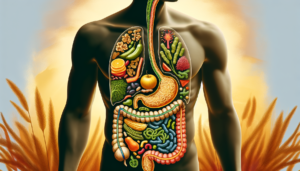The Role of Physical Activity in Stress Reduction
The Role of Physical Activity in Stress Reduction
Understanding Stress
Stress is a natural response to challenges or demands that individuals face in daily life. It can stem from various sources, including work pressures, personal relationships, financial concerns, and health-related worries. While some stress can be beneficial, as it may motivate individuals to perform better, chronic stress can have detrimental effects on both physical and mental health.
Biological Mechanisms of Stress
When a person is stressed, the body releases stress hormones, such as cortisol and adrenaline. These hormones prepare the body for a "fight or flight" response, resulting in increased heart rate, blood pressure, and energy production. While this response is useful in short bursts, prolonged exposure can lead to issues like anxiety, depression, insomnia, and a weakened immune system.
Understanding the complexity of stress requires a biopsychosocial approach, which considers biological, psychological, and social factors. Biological aspects include genetic predispositions and physical health, psychological components explore emotions and coping mechanisms, and social factors encompass relationships and societal influences. Physical activity, as an intervention, has far-reaching effects within this model.
Physical Activity Defined
Physical activity encompasses all movements that involve skeletal muscles and result in energy expenditure. This includes structured exercise (like running, swimming, and lifting weights) and non-structured forms of activity (like walking, gardening, or playing sports). Engaging in regular physical activity is not only vital for maintaining physical health but also a powerful tool for managing stress.
The Science Behind Physical Activity & Stress Reduction
Neurotransmitter Regulation
Exercise promotes the release of neurotransmitters like serotonin, dopamine, and norepinephrine. These chemicals play crucial roles in mood regulation and overall mental health. Increased levels of these neurotransmitters can lead to greater feelings of well-being and decreased perceptions of stress.
Cortisol Reduction
Regular participation in physical activity has been shown to lower the levels of cortisol in the body. As one of the primary stress hormones, managing cortisol levels is crucial for reducing anxiety and enhancing mood. Activities such as aerobic exercises contribute significantly to lowering the cortisol response.
Enhanced Sleep Quality
Physical activity is associated with improved sleep quality, leading to better recovery and reduced stress levels. Regular exercisers often experience deeper sleep and better-regulated sleep patterns. Quality sleep is essential for effective stress management, as sleep deprivation can heighten stress responses and negatively affect mood.
Social Interaction
Engaging in group exercise or sports fosters a sense of community and allows for social interaction, which can be a natural stress reliever. Positive social interactions can enhance feelings of support, reduce isolation, and contribute to an improved mood. Thus, physical activity not only impacts the individual physiologically but also strengthens social bonds that can buffer against stress.
Types of Physical Activity for Stress Management
Aerobic Exercise
Aerobic activities, such as running, cycling, or swimming, have significant benefits for stress reduction. They require sustained effort and help promote the release of endorphins, chemicals in the brain that act as natural painkillers, enhancing feelings of pleasure. Aiming for at least 150 minutes of moderate cardio exercise weekly is recommended for optimal stress reduction.
Resistance Training
While traditionally focused on building muscle, resistance training (weight lifting, body-weight exercises) can also be effective in decreasing stress. This form of exercise empowers individuals by improving strength and functionality, thereby boosting self-esteem and confidence. Increased self-efficacy positively influences stress levels.
Mind-Body Exercises
Practices such as yoga, tai chi, and Pilates integrate physical movement with mindfulness, promoting relaxation and mental clarity. Yoga has been specifically associated with decreased symptoms of anxiety and depression. Mindful breathing contributes to an overall reduction in stress levels by promoting a balanced autonomic nervous system response.
Outdoor Activities
Exercising in natural settings—such as hiking, gardening, or walking in a park—can provide additional benefits. Nature exposure is linked to lower cortisol levels, improved mood, and increased feelings of relaxation. Nature walks have been shown to enhance psychological well-being and reduce the risk of depression.
Creating a Physical Activity Plan for Stress Reduction
Setting Realistic Goals
Establish achievable and measurable goals to foster motivation and commitment. Start small, gradually increasing the duration and intensity of physical activity. Adopting a goal-setting approach can enhance satisfaction and minimize feelings of failure.
Finding Enjoyment
Participating in activities that one enjoys makes it more likely that the individual will incorporate them into their schedule. Experiment with different types of physical activities, including team sports, dance classes, or solo activities, to find what resonates with individual preferences.
Scheduling Regular Exercise
Consistency is critical in reaping the mental health benefits of physical activity. Create a structured schedule that integrates exercise into daily routines. This could mean setting aside specific days and times for workouts or incorporating shorter bouts of activity into everyday tasks.
Seeking Support
Engaging friends or family in physical activities can enhance accountability and enjoyment. Joining local exercise groups or classes can also foster social connections, further amplifying the stress-relieving benefits of physical activity.
Challenges in Maintaining Physical Activity
While the benefits of physical activity for stress reduction are clear, various barriers may impede adherence. These challenges include:
-
Time Constraints: Busy schedules can make it difficult to prioritize exercise. Strategies like integrating brief workouts into daily routines can help.
-
Physical Limitations: Health issues or mobility constraints can deter individuals from exercising. Consulting a healthcare professional or physical therapist can provide tailored advice for safe activity.
-
Lack of Motivation: It can be challenging to initiate and maintain an active lifestyle. Setting small, achievable goals and celebrating progress can help maintain motivation.
- Environmental Factors: Factors such as bad weather or lack of access to safe recreational spaces can hinder outdoor activities. Finding indoor alternatives or adapting residence for physical activity ensures continuity.
Integrating Physical Activity into Daily Life
-
Active Commuting: Walking or biking to work instead of driving promotes both physical activity and reduces stress.
-
Utilizing Breaks: Incorporating brief bouts of physical activity, such as stretching or a short walk during breaks, can refresh the mind and relieve tension.
- Household Chores: Engaging in activities such as cleaning, gardening, or playing with pets also counts toward daily physical activity.
The Impact of Technology
The advent of fitness apps and wearable technology has played a significant role in encouraging physical activity. These tools can aid individuals in tracking their progress, setting goals, and receiving reminders. Virtual workout platforms provide access to a broad range of exercises, making it easier to maintain a regular routine regardless of location or schedule.
Conclusion
The multifaceted relationship between physical activity and stress reduction highlights the importance of integrating movement into daily life. By harnessing the power of exercise, individuals can improve their mental resilience, manage stress effectively, and enhance overall well-being. Engaging in consistent, enjoyable physical activity can lead to lasting changes that foster a healthier, more fulfilling life.








